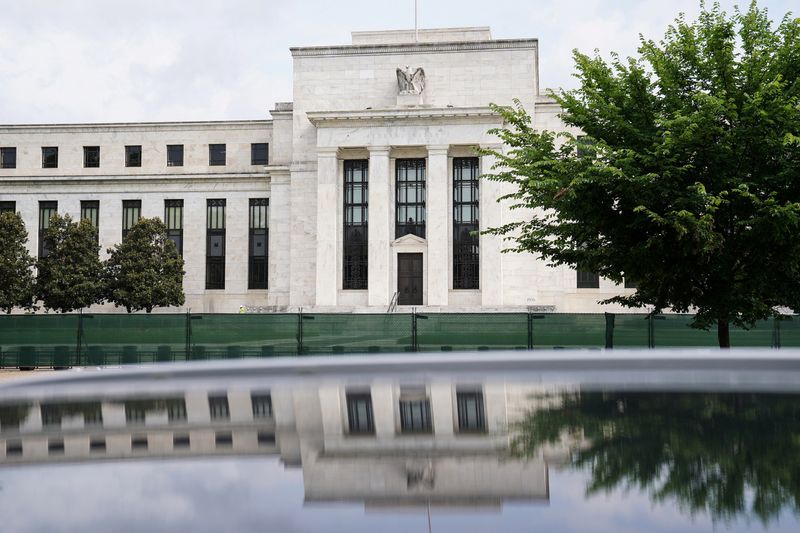By Yasin Ebrahim
Investing.com -- Federal Reserve policymakers favored front-loading larger rate hikes to rapidly move monetary policy to a restrictive stance to extinguish red-hot inflation, the Fed’s June meeting minutes showed Wednesday.
"Participants concurred that the economic outlook warranted moving to a restrictive stance of policy, and they recognized the possibility that an even more restrictive stance could be appropriate if elevated inflation pressures were to persist," the Fed's minutes showed.
At the conclusion of its previous meeting on June. 15, the Federal Open Market Committee raised its benchmark rate by 0.75% to a range of 1.5% to 1.75%. It was the largest Fed rate hike in a single meeting since 1994.
The move caught some by surprise as the Fed had previously ruled out a 0.75% hike. But following the decision, Fed Chairman Jerome Powell flagged incoming data showing inflation continuing to flirt with 40-decade highs as the key drivers behind the central’s bank’s decision.
The Fed’s handiwork, some say, has begun to have the desired impact. Tightening financial conditions have sapped aggregate demand and helped cool inflationary pressures.
The five-year inflation breakeven rate – a key measure of inflation expectations over the next five years – fell to 2.502%, its lowest level since September 2021.
But bringing down inflation has come at a cost: the rising risk of recession.
After months of insisting that the economy is likely to be strong enough to withstand the pace of monetary policy tightening, the Fed appears to be accepting the growing risk of a hard landing.
“It’s gotten harder, the pathways have gotten narrower [to deliver a soft landing],” Powell said last month. “Nonetheless, that is our aim and there are pathways to achieve that.”
Since the Fed's meeting, however, three weeks have elapsed and a slew of economic data have ratcheted up recession bets.
Last week, The Federal Reserve Bank of Atlanta officially estimated the economy would slip into recession in the second quarter. It forecast GDP to slip by 2.1% in Q2, following a 1.5% decline in Q1, pointing to two quarters of negative growth, or a technical recession.
Markets, particularly the bond market, have been pricing impending economic doom. The yield on the 2-year Treasury bond briefly jumped above the yield on the 10-year Treasury note, marking an inversion in a key part of the yield curve that usually spells trouble on the horizon for the economy.
The S&P 500 suffered its worst first-half performance since 1970, falling 20%. The U.S. bond market fell 10% and remains on track for its worst year on record.
Following the minutes, hopes, albeit slender, of a less hawkish Fed - on expectations of inflation peaking - appear to have faded as bets on a 75 basis point hike strengthened.
Bets on the Fed hiking rates by 0.75% at the July meeting rose to above 90% from about 80% a week ago, according to Investing.com's Fed Rate Monitor Tool.
